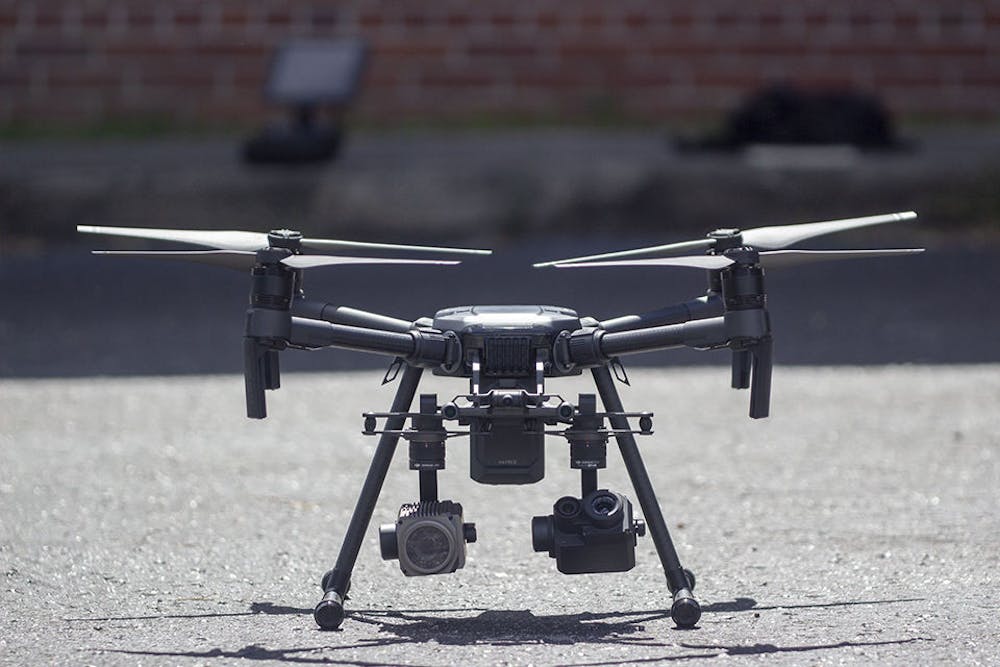They started off as toys.
Now, they can record high-definition video, autonomously fight in war zones and, in Alachua County, help fight fires.
A new $24,000 drone was added on Tuesday to Alachua County Fire Rescue’s fleet of six, which includes drones that fight fires, aid in search-and-rescue operations and assess damage after disasters, said Scott Fielding, the network specialist for the fire department.
Liberty Health Sciences, a local medicinal marijuana company, donated the latest addition, which the team affectionately calls “Reefer One.” The matte-black drone has a host of features, including a $12,000 camera capable of infrared and HD video, Fielding said.
Although the drones do not drop water or fly victims to safety, they provide invaluable intel when it is needed most, Fielding said.
Each aircraft in the department’s fleet serves a specialized purpose. Some can fit into a first responder’s backpack and be deployed on the go, while the bulkier “Reefer One” can use its infrared camera to find a missing person in the middle of the night.
“We can throw that up in the air and see their thermal signature,” Fielding said.
The department also used drones to assess the damage caused by Hurricane Irma and partnered with Florida State University’s Emergency Management Homeland Security Program to search overhead for people who needed medical attention during the protest outside the Richard Spencer speech in 2017.
“We were able to help guide our emergency personnel into a crowd,” Fielding said.
The advancements in drone technology have grown exponentially since the department started using them in 2014. Although Fielding initially struggled to convince his peers of the drones’ potential, over the last four years the department has invested about $14,000 into the technology, Fielding said.
Anna Marchek, a 19-year-old UF nutritional sciences sophomore, owns a “Karma” drone by GoPro, but she did not know the county’s fire department uses drone technology.
“I think drones have benefits and downsides,” she said. “There is no way you could use drones to physically fight fires.”
Marchek supports the idea of using drones if they are used efficiently.
“I think it is smart,” Marchek said. “If they are used for detection purposes, I support it.”
"Reefer One" a drone donated to Alachua County Fire Rescue by Liberty Health Sciences, a locally-owned medicinal marijuana dispensary, flies during a demonstration. "Reefer One" is equipped with a $12,000 dual-mode thermal camera and a camera capable of 30-times zoom. (photo by Aaron Ritter)






